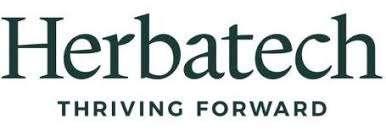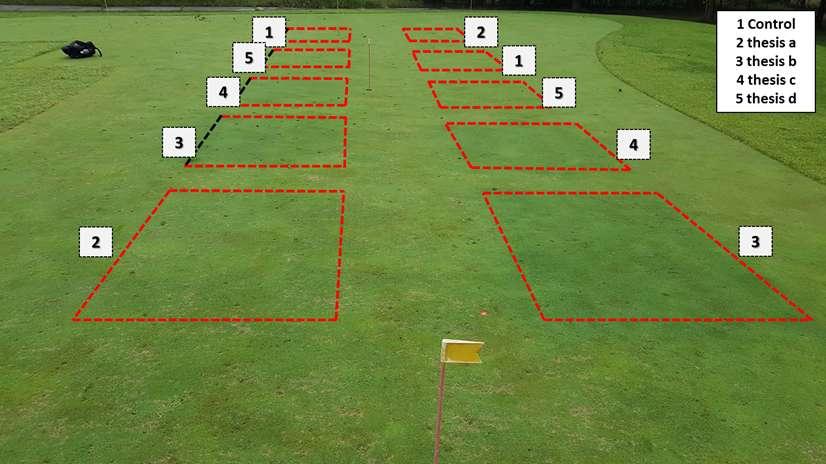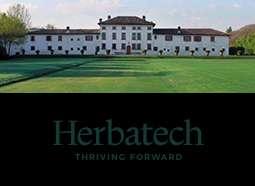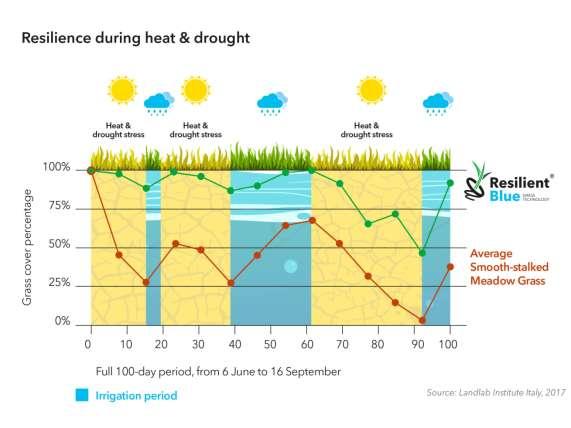
18 minute read
Use of Rubisco osmo protectant
Use of Rubisco osmo-protectant as foliar preventive of saline stress
3 years’ lab and field trials demonstrate the extraordinary efficacy of this product to limit salt damages By Mattia Accorsi, PhD
Advertisement

What is saline stress
Saline stress is an abiotic stress, caused by environment and not biological agents. It can be traced back to various forms; probably the most serious one consists in having high concentrations of NaCl on the soil which involves physical imbalances of its structure that becomes more and more heterogeneous and incapable of retaining water via the capillary route. In addition, salinity causes chemical imbalances in the soil due to competition with Ca, P and K and reduces the absorption capacity of the plants due to osmotic imbalances within the leaf tissues (Bulgari et al., 2019). Saline stress is aggravated by global climatic changes; reduced precipitations and frequent use of irrigation causes in littoral areas the rise by capillarity of the saline ions from the deeper soil strata up to the root zone layer, with consequent deleterious effects on turf vegetation (Bulgari et al., 2019). The use of depurated affluent water for irrigation is another cause of saline pollution. Sports fields and golf courses suffer greatly of salt toxicity due to the recurrent mowing frequency that interferes with evapotranspiration.
Rubisco and Rubisco Smart
Giuseppe Serenelli of Herbatech srl, in collaboration with Professor Mattia Accorsi and Marco Giuliani of the University of Bologna developed in 2015-2016 Rubisco and Rubisco Smart, two foliar osmo-protectants containing amino-acids (Rubisco Smart also contains a green pigment) that ensure best aestheticfunctional performances of turf during severe water-thermal stress periods. Lack of soil available water and localized dry spots are very severe water imbalances that affect turf. But grasses, above all, suffer from water transpiration stress; a cellular dehydration phenomenon of the fleshy part of the leaf (mesophill) caused by excessive intra-cellular osmotic unbalances. Rubisco and Rubisco Smart successfully contribute to prevent this problem.
Rubisco and salinity
In 2017 the research group conducted a series of physiological assessments on the possible preventing effects of Rubisco on damages of turf caused by salinity stress in the protected environment of University of Bologna greenhouses. Rubisco was sprayed at 5, 10 and 100 liters/ ha on Kentuky bluegrass sod and then was appropriately irrigated with salinized water up to 16 dS / m, well beyond the generally tolerated limit of lawn plants (2-6 dS / m). Measurements witnessed, as expected, a progressive increase in the electrical conductivity of the soil but also a higher leaf tissue temperature of the plants presumably caused by their worsened ability to thermo-regulate themselves through transpiration. This resulted in a reduction in leaf coverage per sq. m. of surface and a reduction of fresh and dry biomass of both the apical and radical part of the plant.

Figure 1 above: Hi-tech growth chamber with automated irrigation, nutrients’ control and artificial light was utilized in the 2017 experiment at the University of Bologna. Figures 2,3,4,5, below (from left to right): professional scale for fresh and dry biomass measurements; digital thermometer for measuring leaf temperature; colour photodetector with mathematical analysis software to determine the degree of leaf coverage
From June to September of 2020 open field trials were conducted by Prof. Accorsi and Andrea Patussi of Herbatech at Floor Green sod nursery in Verona over a 1-year-old Barracuda bentgrass turf growing on a 95% silica sand + 5 % chabazitic zeolite substrate and irrigated with saline water. Rubisco was sprayed at 5 liters/ha to verify the efficacy already demonstrated in the 2017 laboratory tests. In addition, two other thesis were evaluated: one with Rubisco tank mixed with Jasmonic Acid (respectively 5 Liters + 3 Liters/ha in 800 L of water) and the other with Rubisco combined with Brassinosteroids (5 Liters +1,5g/ha in 800 L of water).
The aim was to verify possible synergies in reducing saline stress damages using these two anti-oxidative molecules. Results demonstrated and confirmed the excellent efficacy of Rubisco in reducing saline stress during the summertime. No significant visual results were observed by adding Jasmonic Acid and Brassinosteroids to Rubisco. Indeed, Jasmonic Acid produced a slight phytotoxicity on treated plots.

Figure 7: two of main analysis measured during the 2020 experimental field trials
The Verona trials wanted to test also the effect of saline water on soil microbiology and organic matter catabolism and possible effects on soil induced by Rubisco treatments. All treatments with Rubisco significantly increased microbial population compared with control. Treatments with Rubisco tank mixed with Brassinosteroids and Jasmonic Acid irrigated both with spring water and with saline water, determined a similar slight reduction in the content of organic matter. A different response was however noted on organic matter content when turf was sprayed with Rubisco alone. Rubisco irrigated with saline water resulted in an 8% increase of organic matter quantity but, surprisingly, when Rubisco was treated on the plot irrigated with regular spring water, there was a decrease of organic matter content by 21%. This last aspect, a classical fruit of serendipity, will be investigated in further studies because, the correlation of Rubisco with OM reduction and the significant increase of the microbial flora may be the basis for future applications and commercial developments of Rubisco utilization for organic matter management on turf.
Rubisco and Rubisco Smart application on turf with salinity problems:
As a consequence of the positive experimental results, the research group has developed an application program specific for turf suffering of salinity induced problems. On grass growing on salt polluted soils and on turf irrigated with recycled water Rubisco and Rubisco Smart must be foliar sprayed respectively at 5 liters and 7,5 liters/ha in 800 liters of water, starting in springtime, before the appearance of yellowingwilting symptoms and repeated at monthly intervals from April till October. These products work in perfect combination with aeration programs and with the utilization of penetrant surfactants and chelated gypsum.

Resilient Blue® grass technology copes with weather extremes

Resilient Blue® is Barenbrug’s new powerhouse
Extreme drought and heat have clearly taken their toll on sport pitches, golf fairways and sod farms in recent summers. With a new grass technology, Barenbrug now has a solution for conditions like these. Resilient Blue® is the most tolerant and resilient cool season grass solution to heat and drought stress, keeping the turf green and dense for a long time, even in extreme weather situations.

Barenbrug launched Resilient Blue® in February during the first ‘Barenbrug Online Event’. More than 500 viewers from all over Europe registered for the live stream of the introduction of this new grass technology. That was something new for Barenbrug as well. The company often introduces new products in the Netherlands first and then in other countries gradually. This time the introduction was in 32 countries simultaneously.
Sum of tolerance and recovery in extreme situations
The name Resilient Blue® stands for “resilient bluegrass”, referring to the American name of poa pratensis: Kentucky bluegrass. Olaf Bos, technical specialist turf at Barenbrug Holland and closely involved in the development of the newest innovation explains: “For us, resilience means the sum of tolerance in ánd recovery from extreme situations. That is what makes the Resilient Blue® grass technology so unique: the adaption to stress situations and the quick recovery afterwards. It’s a unique combination of some very special poa pratensis varieties with a special seed enhancement to give it the best start possible”. Barenbrug is initially targeting on the sod, golf and sport market. Mixtures with Resilient Blue® technology can be customised for turf growers. Besides that, there will be two standard grass seed mixtures for sport pitches and golf courses: Resilient Blue Sport and Resilient Blue Golf. Over the next year, specific mixtures with Resilient Blue® grass technology will also become available for public green space and private gardens.
Less stress and diseases with less water and fertiliser
The development of Resilient Blue® was a response to the changing climate. Recent summers show the that beside South and East Europe, also Central and West Europe suffer more and more from drought and heat. Mixtures with Resilient Blue® technology require less input in the form of water and fertiliser, which means better resistance to weather extremes. According to Barenbrug, the mixtures have four characteristic advantages. Tests on several locations have shown that Resilient Blue® maintains much denser grass cover in dry summers than ordinary poa pratensis and even better than tall fescue swards. This difference is clearly visible in Chart 1.

Chart 1: The difference in coverage between normal smooth meadow grass and Resilient Blue® during 3 stress periods in one season with no irrigation: better stress tolerance and quicker recovery after stress
Furthermore, the grass recovers visibly faster after a period of stress as can be seen in Chart 1 and 2. Besides that, Resilient Blue® can also withstand a high amount of traffic especially when there is also RPR® grass technology (regenerating perennial ryegrass) in the mixture, which is standard for golf and sport. The last unique characteristic of mixtures with Resilient Blue® grass technology is the greater tolerance to diseases associated with the changing climate, such as grey leaf spot and summer patch.

Chart 2: The recovery of the Resilient Blue® plants that are damaged by extreme situations, recover significantly faster compared to standard Poa pratensis.
Like an airbag
“Resilient Blue® grass technology can be used as a fundament for a more stress tolerant grass sward”, says Olaf Bos who has a broad experience in construction and maintenance of sport accommodations and golf courses. “I see an advantage in it, especially on sod production, fairways and sport pitches that are on sandy soils and have irrigation limitation either by law or by capacity. Last year, many golf courses and sport pitches in The Netherland for example had their irrigation restricted by the water authorities. With the dry summers in the past few years even in central and western Europe, it’s a challenge to keep large areas all green at the same time. Resilient Blue® grass technology can certainly be a solution for that.” Bos adds: “On the locations where we tested Resilient Blue®, you can clearly see the power of the technology in hot dry summers.

Picture 1. The technology has been subjected to many tests like in rain-out shelters with 6 weeks no irrigation (left: before, right: after 6 weeks) at all at very hot conditions (peaks over 35dgC).
The strength of the Resilient Blue grass mixture is that its composition adapts to the situation. On golf courses for example, you will see this more clearly on a sandy course with dry high mounds than on a clay course. I always compare it to an airbag in a car. You don’t always see the protection, but when you need it - in this case during extreme drought and heat - you can rely on it. It cushions the impact and fights back after that. You will really see the benefits.”
No brainer for sod growers
The new poa pratensis grass technology is also specially developed for sod growers. Bos explains: “Poa pratensis is the most used fundament for good sods. With Resilient Blue, you don’t need to irrigate as much, which leaves you with more water or more time to plan a good distribution on your area. These water savings mean you have less pressure on your planning. Above all, Resilient Blue is also made of the top quality poa pratensis variety according to the NTEP listing. The average sod farm can benefit greatly from this.”
Lot of interest
Barenbrug looks back on a successful launch of Resilient Blue® grass technology. Bos has noticed there is a lot of interest. “Especially from sod growers and greenkeepers, but also from municipalities for example. Heat and drought are topics that concern everyone. There is also the issue of cost savings. Now we have the perfect answer to this.” The grass technology is now available at Barenbrug and can be used to make tailor made solutions for all sod farms.
More information
You can find all information about the new Resilient Blue grass technology at: https://www.barenbrug.biz/resilient-blue
Barenbrug created a 30 second video that tells it all: https://www.youtube.com/watch?v=ON-2c1UEuxA

© European Turfgrass Society 2021
Edited by Claudia de Bertoldi PhD, etsoffice@turfgrasssociety.eu
Deadline for submission of material for 02/2021 edition: June 15th
The EUROPEAN TURFGRASS SOCIETY
The objectives of the ETS include the spread of innovative applications and encouragement of a holistic view of turf, particularly with respect to its influence on urban and environmental quality. This approach is significant as the founding members are representatives of a large industry that has global importance. We aim to: a) Provide a forum for scientists, consultants, companies and practitioners to discuss technical issues related to the provision of turf surfaces. b) Spread innovative applications for the benefit of the turfgrass industry, national and local government, and the European public. Encourage a systemsbased approach to the study of turfgrass through multi-disciplinary groups working at different levels. c) ETS considers turfgrass knowledge in the broadest sense, including its use in sport and leisure, its role in improving urban quality and its importance in the mitigation of environmental effects such as soil erosion. d) Develop a strong ethos to promote sustainable, low input systems and solutions based on the conscious use of non-renewable resources.
Current ETS Board of Directors
Stefano Macolino
University of Padova, (IT)
ETS President
Stefano Macolino is an Associate Professor at the Department of Agronomy, Food, Natural resources, Animals, and Environment of the University of Padova.
He graduated in Forestry Science in 1996, Faculty of Agriculture at Padova University. He has carried out research on forage management and turfgrass at the Department of Environmental Agronomy and Crop Production as a Postgraduate Researcher. In 2003, he achieved the Ph.D. in Environmental Agronomy. He has been teaching actively, including three courses: Turfgrass and Revegetation, Forage Crops, and Botany of Cultivated Plants. Dr. Macolino is currently the president of the Committee for the improvement of teaching at the School of Agriculture and Veterinary Medicine of Padova University. He conducts researches on the following: 1. Impact of cultural practices on cool and warmseason turfgrasses in transition zones. 2. Forage crop production and management. 3. Production and plant biodiversity of mountain grasslands. He supervised Ph.D. students and postdoctoral fellows on the made mentioned topics. Dr. Macolino is the author and co-author of nearly 50 scientific publications in peer-reviewed journals, and numerous publications in conference proceedings, and technical magazines. He is also the author of two books in Italian for undergraduate students.
Marcela Munoz
Syngenta (UK)
ETS Board Member
My name is Marcela Munoz, I’m a leading turfgrass specialist qualified as an Agronomist Engineer from The Pontifical Catholic University of Chile and have a Master of Science Degree from The Ohio State University in Turfgrass Management. Since 2015 I’m based in Cambridge, UK, working as Syngenta’s Technical Services Manager for the EAME region. I’m an amateur football player that joined this industry moved by my passion for sports, agronomy and science. I had been in the turf industry for more than 15 years and worked at different positions and countries around the world. Some of my latest exciting experiences include working for the STRI as a turf agronomy consultant for the FIFA 2014 Brazil World Cup and providing technical support at the Ryder Cup at Le Golf National in Paris. I’m also an active member of many turf associations around the world and volunteer since 2011 in the International Committee of the Sports Turf Managers Association of America (STMA) In my current role I work closely with associations such as ITS, FEGGA, GMA, BIGGA, STERF, R&A and other local associations and Federations around the region. I also work very closely with the Syngenta Turf Research facility at Stein in Switzerland and the International Research Centre at Jealott’s Hills in the UK, as well as independent researchers, agronomists, greenkeepers and sports turf managers across Europe, Africa and the Middle East. My role also includes supporting the marketing team and commissioning pioneering research to maintain Syngenta at the leading edge of turf science, as well as delivering the results back to the industry in the form of practical solutions to help create consistently better playing surfaces.
Claudia de Bertoldi
Turf Europe Srl (ITA) ETS Secretary and Treasurer
I received my BA in 2003, after an internship at North Carolina State University (USA) and I have completed my M.Sc (Progettazione e Pianificazione delle Aree Verdi e del Paesaggio) at University of Pisa (Italy) in 2006. My PhD (Allelopathic interferences of plants) was from S. Anna School of Advanced Studies in 2007-2010. I have been working as consultant at Pacini Company (Pisa – IT) for warm season turfgrass production made in Tunisia during 2010-2012. Since 2013 I am employed by Turf Europe srl (Livorno – IT). I am actively engaged in landscaping and realization of gardens and turfgrasses for ornamental and sport use. Management of high-quality sport fields also through precision agriculture. Consultant for turf seeding in difficult zones (dumps and caves). Botanical censuses and visual tree assessment. Participation in R&D projects financed at European level. More than 15 publications, posters and presentations on conferences and meetings on turfgrass.
Marco Schiavon
University of Florida (USA) ETS Board Member
Ph.D., is an Assistant Professor in the Environmental Horticulture Department, University of Florida at the Fort Lauderdale Research and Education Center. His primary research interests include potable water conservation for irrigating turfgrass areas, salinity management, physiology of turfgrass in response to drought stress. He received a B.S. in Agronomical Sciences in 2005 and a M.S in Agronomy in 2008 both from University of Padua, Italy, and a Ph.D. in Agronomy in 2013 from New Mexico State University. In 2013, he moved to University of California Riverside where he worked as a Postdoctoral Scholar until December 2016, and subsequently as an Assistant Researcher until November 2019. He has published more than 30 refereed journal articles.
Karin Juul Hesselsøe
Norwegian Institute of Bioeconomy Research (NOR) ETS Board Member
M.Sc in Agriculture 1996, Copenhagen University. From 2006-2019 employed at the Greenkeepers College Sandmoseskolen in Denmark as teacher in greenkeeping and landscape gardening.
From June 2019 employed at NIBIO, Landvik. Experience with writing/translation of popular articles and fact sheets on golf course management. In 2018 project leader on an IPM-project on Danish golf courses financed by the Danish Environmental Protection Agency.

Fritz Lord
COMPO Expert (GER) ETS Board Member
Study of horticultural science at Rhein University Geisenheim, M.sc. in soil science/entomology. Study of Agricultural Science at Humboldt University Berlin; M.Sc. in crop science, plant diseases; Ph.D at Humboldt University Berlin in phytopathology, antagonistic rhizobacteria (PGPR), soil borne pathogens (Fusarium). Since 2008 working for one of Europe`s leading fertilizer manufacturer COMPO Expert in Münster, Germany. Responsible for the segment turf and public green, vegetation-technical consultation, research and development, product management and education. Specialties/ experiences: soil-plant-microorganism interactions, bio stimulants, microbial fertilizer, turf nutrition and maintenance. Various publications regarding turf fertilization and maintenance (e.g. European Journal of Turfgrass Science, New Landscape). Teaching turf seminars for greenkeepers and groundsmen in Germany and abroad. ETS member since 2008, board member of the International Turf Grass Society (ITS) since 2014. Further memberships: German Turfgrass Society (DRG), Greenkeeper Association of Germany (GVD) , Austrian Greenkeeper Association (AGA), Förderkreis Landschafts- und Sportplatzbauliche Forschung (FLSF), Forschungsgesellschaft Landschaftsbau e.V. (FLL).

Wolfgang Praemassing
DEULA (GER) ETS Board Member
Study of Agricultural Biology (University Diploma) at University of Hohenheim, 1991 Doctoral Dissertation (PhD) Promotion with Prof. Dr. H. Franken, University of Bonn, subject: Soil physical Effects of Aeration on Turfgrass Soils, 2008.
Occupation and activities:
Professor for Sustainable Turfgrass Management at University of Applied Sciences Osnabrueck, Agronomist and lecturer in Greenkeeper Education and Training for golf and sport sites at DEULA Rheinland GmbH, Education Center, Kempen. Member of editorial staff of "European Journal of Turfgrass Science". Member of Turf expert committee of German Soccer League (DFL).
Member of working group "Water" at German Golf Federation. Member of examination boards of Chamber of Agriculture Nordrhein-Westfalen Golf Course Greenkeeper and HeadGreenkeeper, Greekeeper/Groundsmen Sport Sites, Competence of Pesticide application.
Carlos Guerrero
University of Algarve (POR) ETS Board Member
Carlos Guerrero is graduated in Horticulture Engineering at the University of Algarve (Portugal). Has a M.Sc. in Soil Fertility and Plant Nutrition at the Agronomy Superior Institute, of the Technical University of Lisbon (Portugal) and a PhD in Environmental Agronomy at the University of Algarve (Portugal).
Assistant Professor at the University of Algarve (Faculty of Sciences and Technology), a former Diretor of the Degree Program in Agronomy (2015-2018) and also a former Director of the Master Program in Management and Maintenance of Golf Courses between 2008-2010.
Teaches Soil Science in Landscape Architecture and Soil Science and Agriculture Machinery in the Agronomy. Is also specialized in groundwater and soil nitrate pollution and has experience on organic and compost uses in agriculture and turfgrass.
Actually, is working on biological control of plant diseases, mainly turfgrass, and also on remote sensing for turfgrass maintenance purposes with unmanned aerial vehicles and multispectral sensors.”







